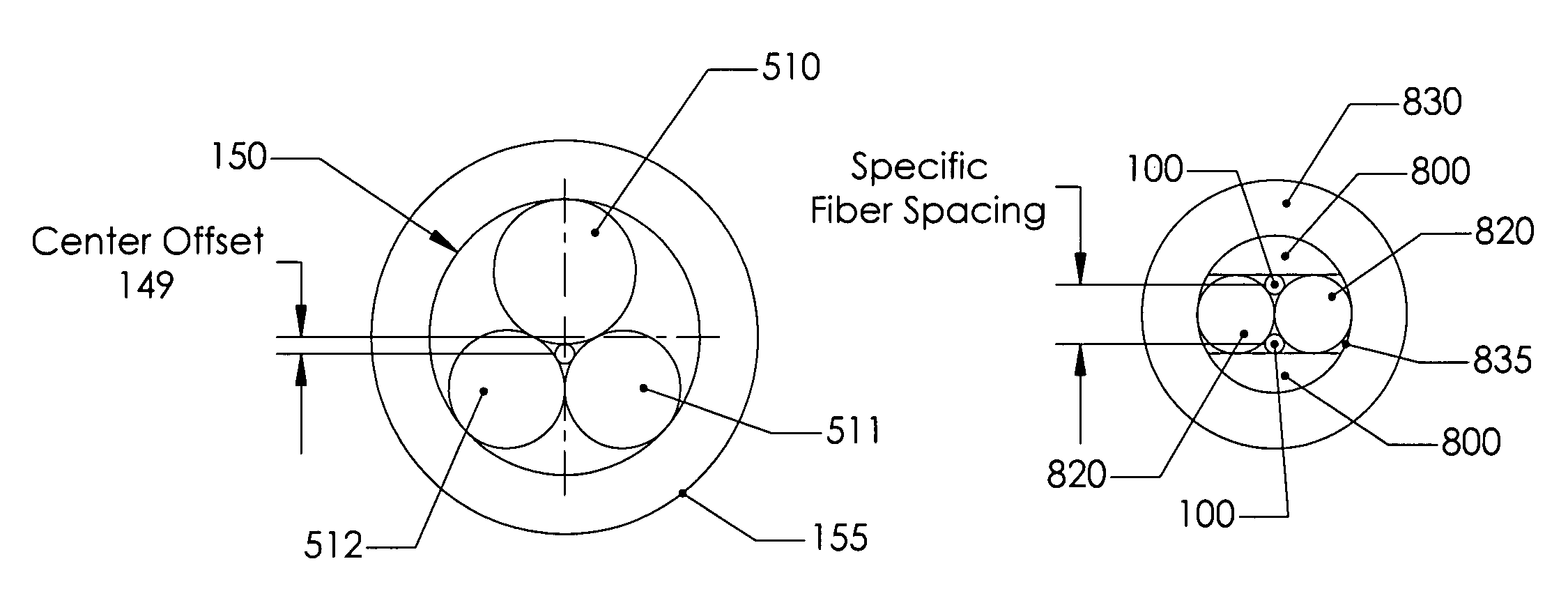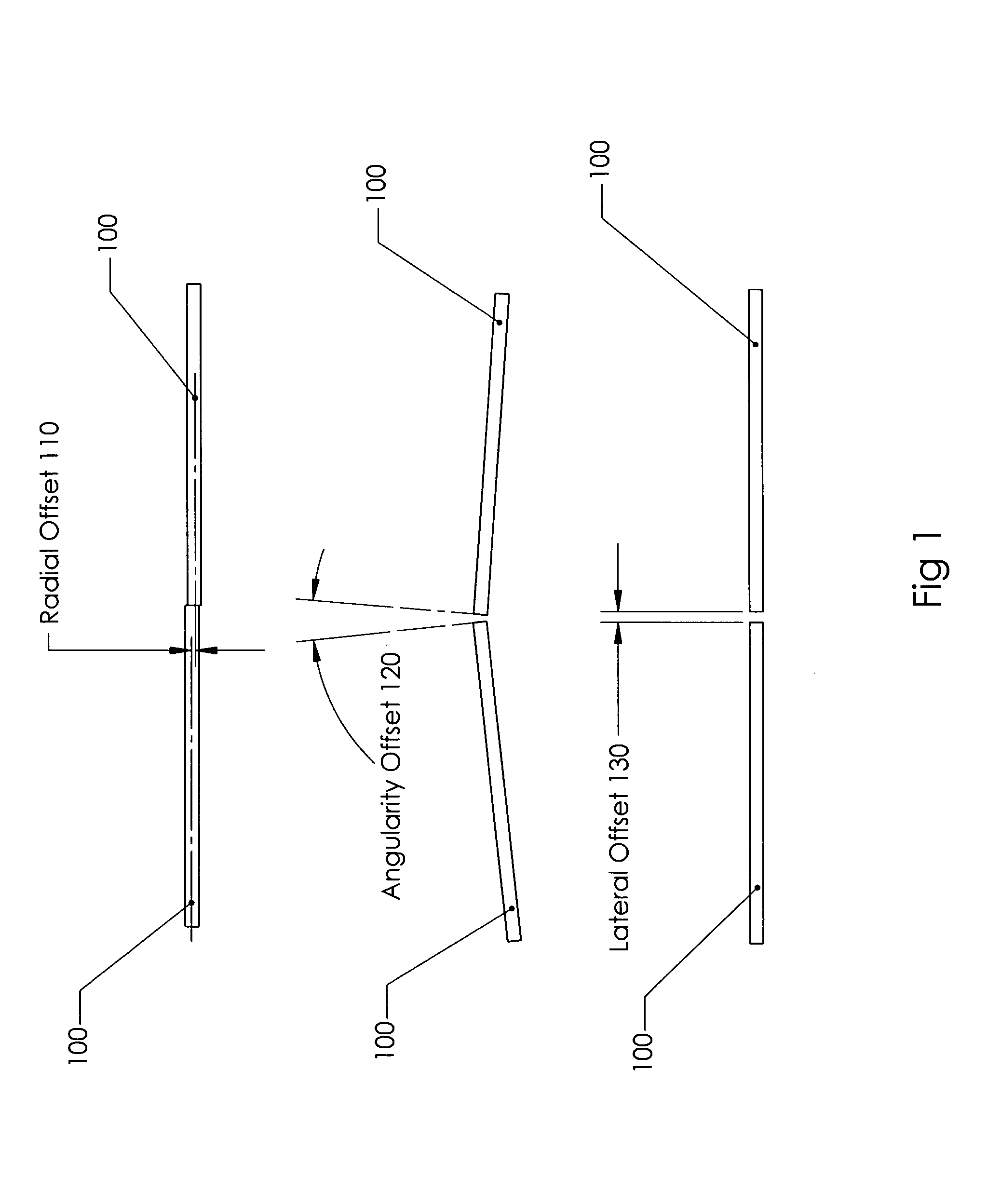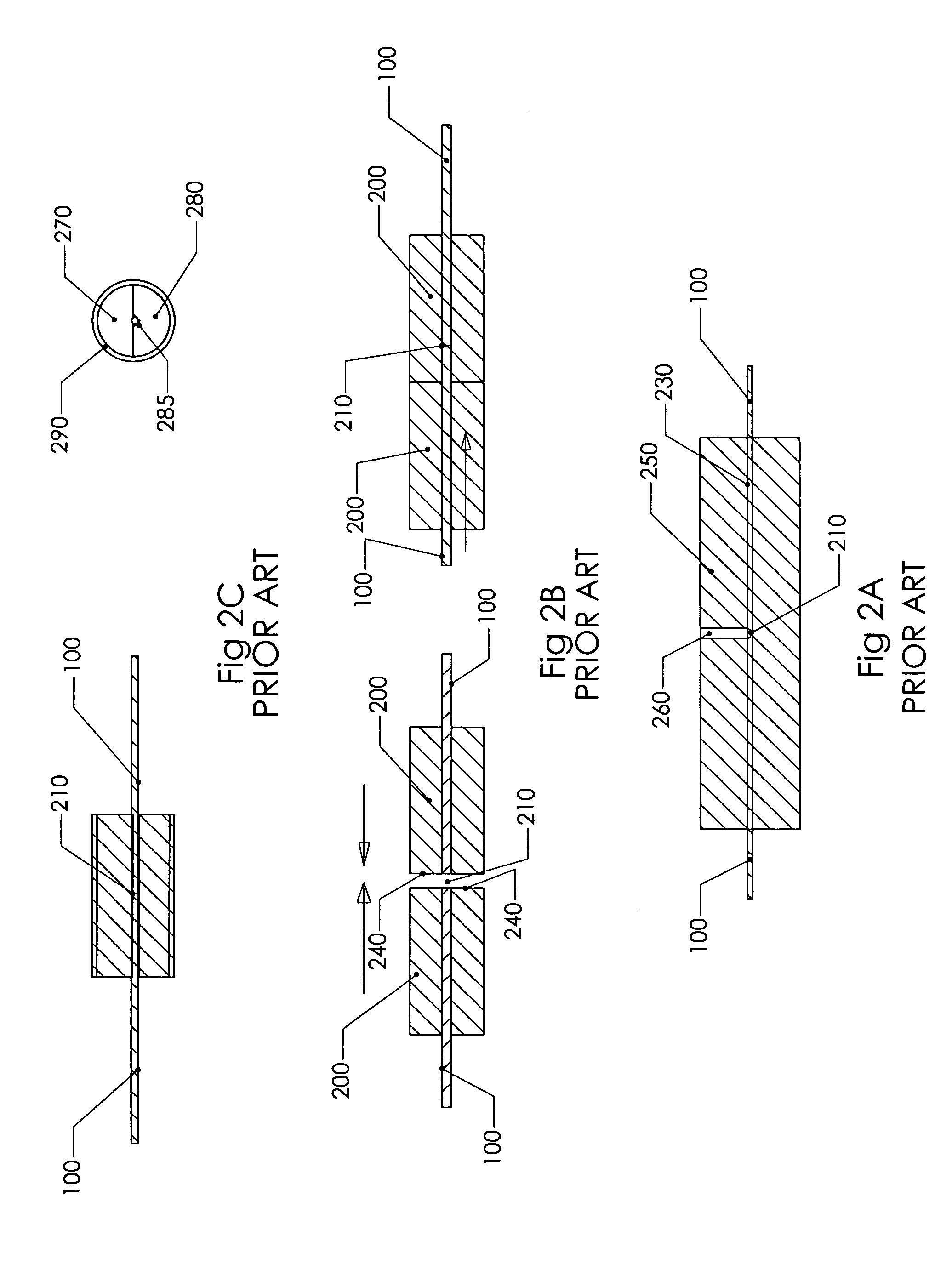Fiber guiding platform for mechanical splicer, optical connectors, fiber holder and methods
a technology of mechanical splicing and guiding platform, which is applied in the direction of optics, instruments, optical light guides, etc., to achieve the effect of eliminating the use of clamping mechanisms, stable and precise fiber holding, and tight mechanical toleran
- Summary
- Abstract
- Description
- Claims
- Application Information
AI Technical Summary
Benefits of technology
Problems solved by technology
Method used
Image
Examples
Embodiment Construction
[0066]Normally, a long, straight and precise channel that matches the optical fiber size is needed to facilitate fiber optics cable mechanical splicing. FIG. 1 shows the necessary optics fibers' physical alignment requirements for coupling that will result in no / or minimum optical power loss. In the case of single mode optical fibers, the radial offset 110 should be less than 10% of the wave guide core diameter (generally 0.009 mm), i.e., less than 0.001 mm for single mode fiber optics. The angularity offset 120 should be 2 degrees or less, and the lateral offset 130 should be (20%) 0.002 mm or less. If these requirements are satisfied, the coupling loss will be within acceptable limits, i.e. limited to 0.3 dB or less.
[0067]FIG. 2A illustrates a prior art mechanical splicer 250. Extensive effort was made to create a straight through bore hole 230. If the bore hole size 230 is too loose, then the fibers will not properly align and therefore will not meet fiber light optical coupling ...
PUM
 Login to View More
Login to View More Abstract
Description
Claims
Application Information
 Login to View More
Login to View More - R&D
- Intellectual Property
- Life Sciences
- Materials
- Tech Scout
- Unparalleled Data Quality
- Higher Quality Content
- 60% Fewer Hallucinations
Browse by: Latest US Patents, China's latest patents, Technical Efficacy Thesaurus, Application Domain, Technology Topic, Popular Technical Reports.
© 2025 PatSnap. All rights reserved.Legal|Privacy policy|Modern Slavery Act Transparency Statement|Sitemap|About US| Contact US: help@patsnap.com



